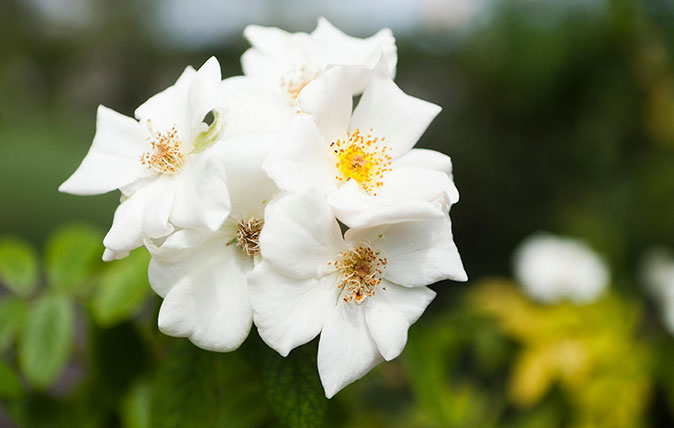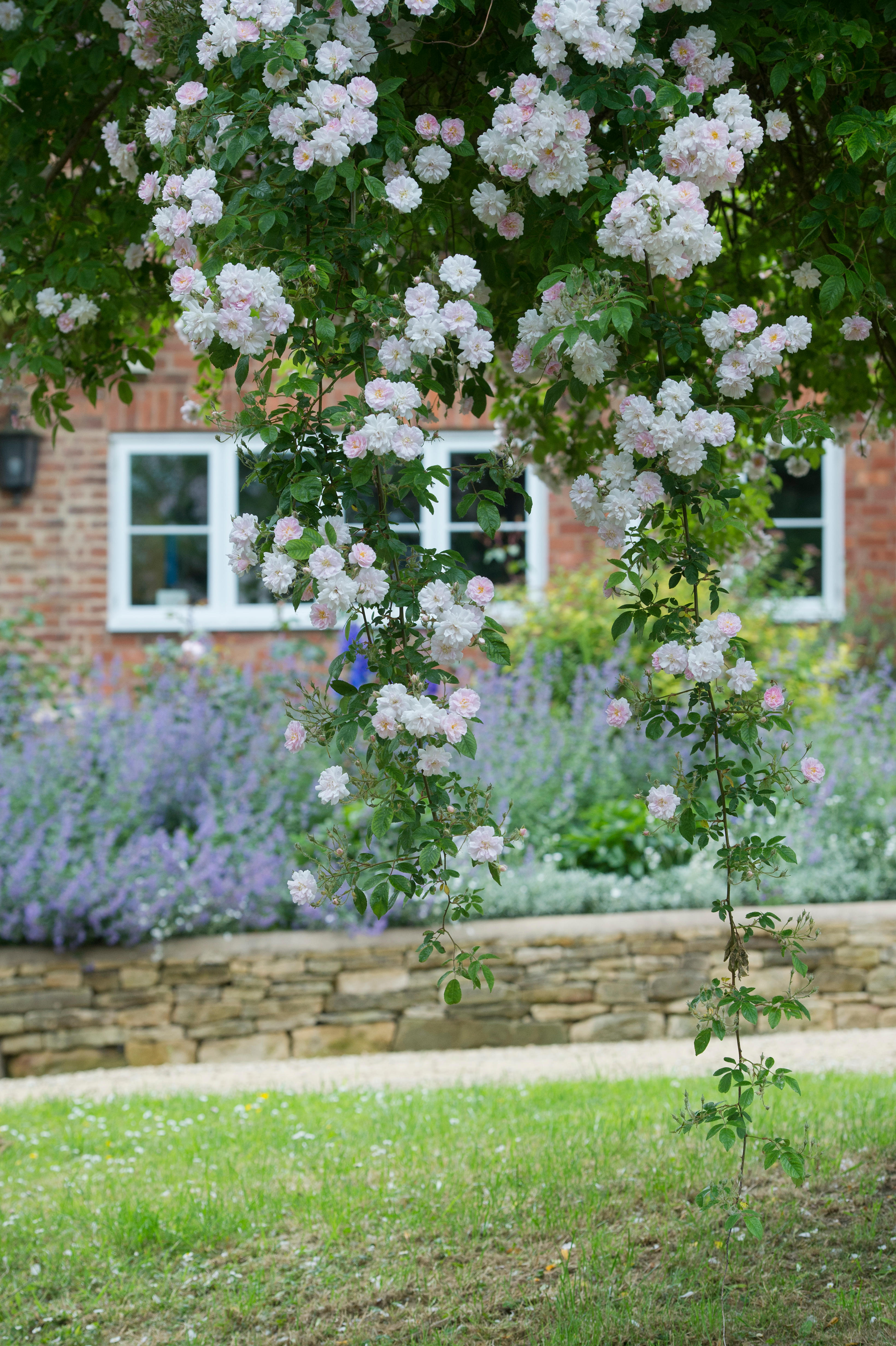Musk Roses: Beautiful flowers, and the 'sweetest smell in the air' by far
Mark Griffiths discusses the wonderful qualities of the enigmatic but irresistible musk rose – aka osa moschata.


Some time ago, we re-created Titania’s bower from A Midsummer Night’s Dream, the bank ‘Quite overcanopied with luscious woodbine,/With sweet musk roses, and with eglantine’. On either side of a grassy mound in a sunny walled corner of the garden, we planted eglantine (Rosa rubiginosa) and musk rose (R. moschata).
In a few years and with surprisingly little training and tying, their stems had grown up and met in a shaggy arch, interwoven with woodbine (Loni-cera periclymenum). This year, thanks to the June heatwave, all three flowered in concert, bang on time for midsummer’s eve.
For the musk rose, this was unusually early. In Great Britain, its main flowering season typically begins in late summer and lasts into autumn. It’s a ravishing sight, this rambler with its pale and elegant foliage and slim stems that end in branching sprays of small white blooms.
More ravishing still is their scent, which travels far and is most potent at dusk. In Of Gardens, Francis Bacon declares the musk rose second only to violets in yielding ‘the sweetest smell in the air’. I’d put it first and by a very long way.
The musk rose’s origins are a mystery. It has never been found in a truly natural state. From Asia to the Mediterranean, it has been known since ancient times, but only in gardens or as an escape or relict of them.
Of its wild relations, which range from Afghanistan to China, some (notably, R. brunonii) are larger and have bolder flowers, but none is so bewitchingly scented.

In the Renaissance, it became widely grown in Europe for ornament, medicine and perfume and was given the name R. moschata and vernacular equivalents such as rosa moschetta, rose musquée and musk rose.
Exquisite houses, the beauty of Nature, and how to get the most from your life, straight to your inbox.
In 1582, Richard Hakluyt of the Middle Temple, a reliable source, recalled that it was introduced to English horticulture by Henry VIII’s fixer Thomas Cromwell, who obtained it from Italy. Although, by the 1590s, this import was mantling arbours and trellises in elite English gardens, it was still perceived as covetable and foreign.
Around the decade’s start, Christopher Marlowe and Thomas Nash featured it in their play Dido, Queen of Carthage, when conjuring a paradisiacal North African ‘garden where are beehives full of honey,/Musk roses, and a thousand sort of flowers’. Then, in 1594–5, Shakespeare gave it its most famous cameo, in A Midsummer Night’s Dream.
Some recent commentators identify Titania’s musk roses as our native R. arvensis on the grounds that it’s summer-flowering and in the mistaken belief that Shakespeare took the fairy queen’s flora from the English countryside.
To Elizabethans, however, ‘musk rose’ meant only R. moschata. Moreover, it will bloom by midsummer in warmer years and in climates like that of Athens, where the play is set.
Titania’s bank is an imaginary assemblage of actual plants, strange, magical, desirable and symbolic. Of course her musk roses are R. moschata, an exotic prized in Shakespeare’s day for a perfume that, appropriately here, lullabies and seduces.
Elizabeth Gaskell’s 1858 novel My Lady Ludlow is remarkable, among other things, for its descriptions of gardens and changing horticultural fashion. The eponymous countess quotes Bacon’s essay to her companion: ‘“Next to that,” – he is speaking of violets, my dear, – “is the musk rose,” – of which you remember the great bush, at the corner of the south wall just by the Blue Drawing-room windows; that is the old musk rose, Shakespeare’s musk rose, which is dying out through the kingdom now.’
R. moschata was indeed disappearing from British gardens, supplanted by modern varieties. Aptly, one of the last old specimens grew at The Grange, Bitton, the Gloucestershire home of Canon Henry N. Ellacombe, author of The Plant-Lore & Garden-Craft of Shakespeare (1878). He gave cuttings to his protégé in plantsmanship E. A. Bowles for his garden at Myddelton House near Enfield. There, in 1965, it was propagated and so began this historic rose’s return.
Do consider joining in R. moschata’s comeback. Buy it this winter, bare-root from a rose specialist, and plant it in well-drained soil against a wall, post or tree where it can reach into sunlight. Once established, it will flower freely – perhaps not every June, but always a few months afterwards, casting the spell of its scent over the garden.
- - -
Mark Griffiths is editor of the New RHS Dictionary of Gardening
Country Life is unlike any other magazine: the only glossy weekly on the newsstand and the only magazine that has been guest-edited by His Majesty The King not once, but twice. It is a celebration of modern rural life and all its diverse joys and pleasures — that was first published in Queen Victoria's Diamond Jubilee year. Our eclectic mixture of witty and informative content — from the most up-to-date property news and commentary and a coveted glimpse inside some of the UK's best houses and gardens, to gardening, the arts and interior design, written by experts in their field — still cannot be found in print or online, anywhere else.
